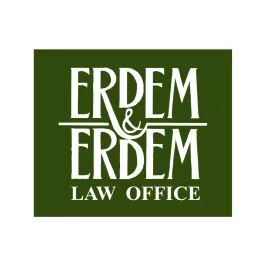Introduction
There are mainly three methods for exiting a limited liability company: transfer of shares, an exit right and squeeze out. Unless the articles of association forbid the transfer of shares, the shareholders of a limited liability company may exit the company by transferring their shares. Nonetheless, exiting the partnership on the basis of an exit right and squeeze out are subject to regulations different from those governing the exit of a shareholder from the company through share transfer.
In this article, the provisions relating to exit and squeeze out in limited liability companies, as regulated in Articles 638 through 640 of the Turkish Commercial Code No. 6102 ("TCC"), will be assessed1.
The Right to Exit a Limited Liability Company
A shareholder has the right to exit a limited liability company mainly in two ways: where the company articles of association provide for an exit right and where there is a just cause. Furthermore, a shareholder, in the face of the aforementioned, may accede to another shareholder's request to exit.
Exit Right due to a Cause Provided by the Articles of Association
Pursuant to Art. 638/1 of the TCC, the right to exit a limited liability company may be regulated by the articles of association. The execution of an exit right may be held subject to certain conditions or terms. However, a provision granting exit rights to only a certain group of shareholders would not be permitted, as it would violate the equal treatment principle as put forth in Art. 357 of the TCC.
When the terms and conditions of an exit right arising from the articles of association are met (or whenever the shareholder wishes - where no such conditions are stipulated in the articles of association), the shareholder declares to the company his will to exit. This declaration is effective upon reception by the company and in general, is not bound by any form requirement; although, the articles of association may also stipulate form requirements.
An Exit Right due to a Just Cause
The right to exit in the presence of a just cause is stipulated in Art. 638/2 of the TCC. The invocation of this right does not rely upon the existence of a provision in the company articles of association.
In general, a "just cause" is a situation that renders the relationship of partnership unbearable. This may originate from the activity of the partnership or the personal relationships between the shareholders. Whether the shareholder exercising the right is negligent in the occurrence of the situation does not affect his ability to exercise the exit right.
Although the TCC does not define "just cause" per se, certain situations have been cited as just cause. For instance, the "disloyalty of a shareholder at management or accounting" or "failure of a shareholder to perform the essential duties and obligations" and situations similar to these qualify as just causes in Art. 245 of the TCC. These cases are of exemplary nature; the presence of a just cause will be determined separately in each case, taking into account the facts of the case, the particularities of the shareholder and the structure of the partnership.
Art. 638/2 stipulates that an exit right may be enforced as a request before the court. However, Turkish doctrine indicates that the shareholder may simply declare his will to exit to the company prior to a request before the court. The shareholder shall take this request before the court, if and when the company denies it.
The second phrase of Article 638/2 of the TCC was not a part of the former Turkish Commercial Code No. 6762, and it has been integrated into the TCC from Swiss law. According to this phrase, the court may decide to either freeze all or some of the rights and obligations of the claimant shareholder arising from the partnership or take the necessary precautions to secure them.
Accession to Exit
The right to accede to exit stipulated in Art. 639 of the TCC ensures the respect of the principle of equal treatment. According to this provision, when a shareholder requests to exit, before the court or directly from the company, the managers of the company shall notify the fact to other shareholders. Any of the shareholders of the company who may individually rely on one of the causes explained above may demand to accede to the exit request within a month.
The TCC does not address whether or not the cause upon which the acceding shareholder will rely has to be the same as the cause expressed by the prior request of the first shareholder, or if the acceding shareholder may rely on a different cause or causes. The legislative justification of the TCC indicates that discussions and responses on this topic are purposefully reserved for the jurisprudence and the doctrine. However, the court must rule on the validity of each shareholder's cause separately.
Squeeze-Out from a Limited Liability Company
There are two methods of squeezing-out a shareholder from a limited liability company. The first of these is squeeze-out via a general assembly resolution under circumstances stipulated in the articles of association; the other squeeze-out via a court decision on the basis of a just cause.
Squeeze-Out via General Assembly Resolution
Pursuant to Art. 640 of the TCC, shareholders may stipulate in the articles of association the causes for squeeze-out. However, these causes must be objectively acceptable and in accordance with the equal treatment principle. Upon the occurrence of any of these causes, the concerned shareholder may be squeezed-out from the company via a general assembly resolution. As per Art. 621 of the TCC, the quorum for this resolution is two thirds of the votes and a majority of the capital possessing the right to vote.
Within 3 months following the notification of the general assembly resolution through the public notary, the squeezed-out shareholder may request the annulment of this decision before the court. Upon this request, the Court analyzes mainly if the stipulated cause has occurred or not; it cannot examine whether the cause is important or not. Since the cause is presumed to be important due to its presence in the articles of association, the court abstains from a separate analysis on its justness. The validity of this cause, on the other hand, is analyzed in terms of violation of the protection of personality and public morality. If the cause does not derogate from the protection of personality and public morality, and if it has occurred in the case at hand, the request for annulment of the decision will be rejected.
Squeeze-Out via Court Decision
Similar to the exit right in the presence of a just cause, the right to squeeze-out a shareholder with a just cause does not require the existence of a specific provision in the articles of association. Art. 640/3 of the TCC stipulates that the company may invoke this right in the form of a request before the court. The company files suit against the shareholder and where the court opines that just cause exists, it decides in favor of the squeeze-out of the shareholder.
Conclusion
In the presence of a just cause, the right to exit a limited liability company or to squeeze-out a shareholder therefrom may always be invoked. However, as explained above, relying on causes stipulated in the articles of association provides a fast solution through a general assembly resolution, especially in squeeze-out cases. Furthermore, such provisions may be freely written into the articles of association, so long as they do not derogate from the equal treatment principle.
Footnotes
1. Art. 636/3 of the TCC regulating the exit of a shareholder that requested the dissolution of the limited liability company on the basis of just cause is out of scope of this article.
The content of this article is intended to provide a general guide to the subject matter. Specialist advice should be sought about your specific circumstances.

